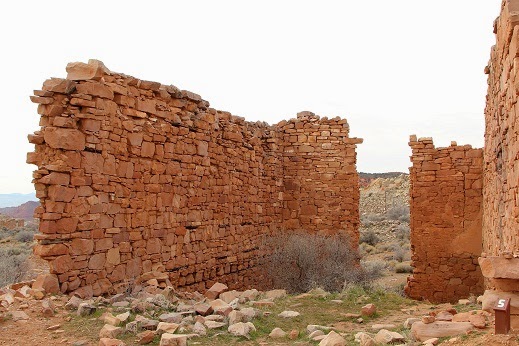Peggy Sue's Diner was originally constructed in 1954 using excess railroad ties and mortar from the nearby Union Pacific Rail Yard; and when completed, the building contained 9 counter stools and 3 booths. Unfortunately, when Interstate 15 was constructed it bypassed Yermo, and Peggy Sue's closed for a lack of business.
Then, in 1987, a couple from Southern California, with an extensive collection of movie and TV memorabilia, purchased the property as a place to display and store their collection. To help attract customers, a 5 & Dime Store was added, along with an ice cream counter that served old fashioned ice cream, malts, sundaes, floats, and deli sandwiches. Most of the couple's collection consisted of items from the 50s and 60s, so the restaurant's slogan became "Eat to the Beat," as a jukebox blared out early rock music (Elvis, Jerry Lee, Johnny Cash, etc.). Over the years, the 5 & Dime Store has turned into more of tourist trap that specializes in nostalgic items, including a large collection Betty Boobs items. In keeping with the décor and theme, the restaurant serves a Patty Page Patty Melt, a Buddy Holly Bacon Cheeseburger, a Frankie Avalon Philly Steak Sandwich, and Fabian French Dip.
Arriving in California, we picked up our granddaughter at her school and after giving me a big hug, she said: "Grandpa, you have less gray hair then when I last saw you!" Just as I was thinking that my diet and weight loss must really be working, she went on to say: "Now your hair is almost all white." I was about to disown her when she said: "But now you look so distinguished!" What a great kid - She should be a politician!
While we were in California our granddaughter was playing in a basketball tournament and we were able to watch three of the games. Their team won the first game by a large margin, the second game was won by 2 points, and the last game they came in second (of course, the last team they were playing consisted of girls that were two years older.) Between games, we also visited the USS Iowa. (Stay tuned for the next RonnieAdventure.)



































